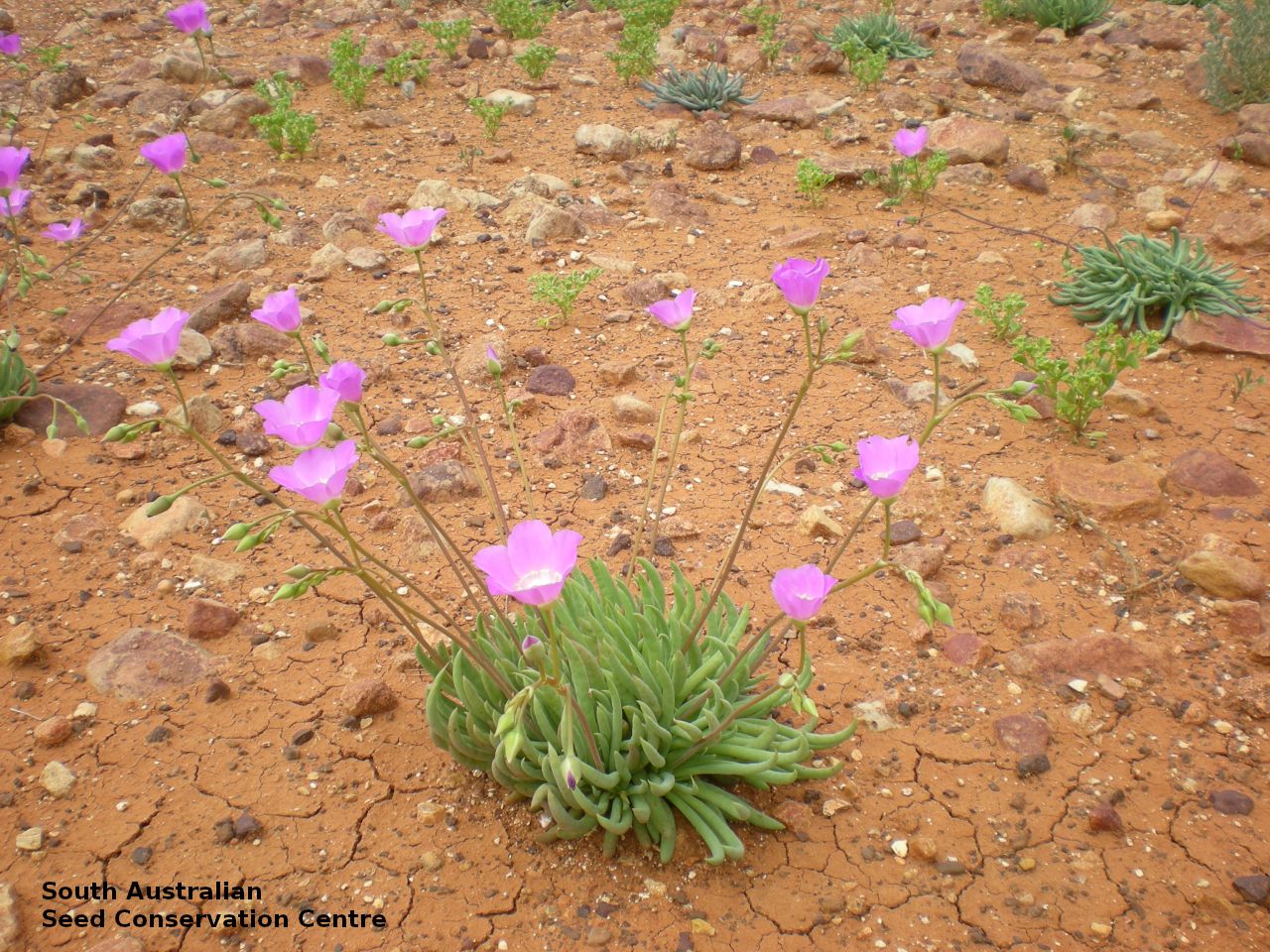
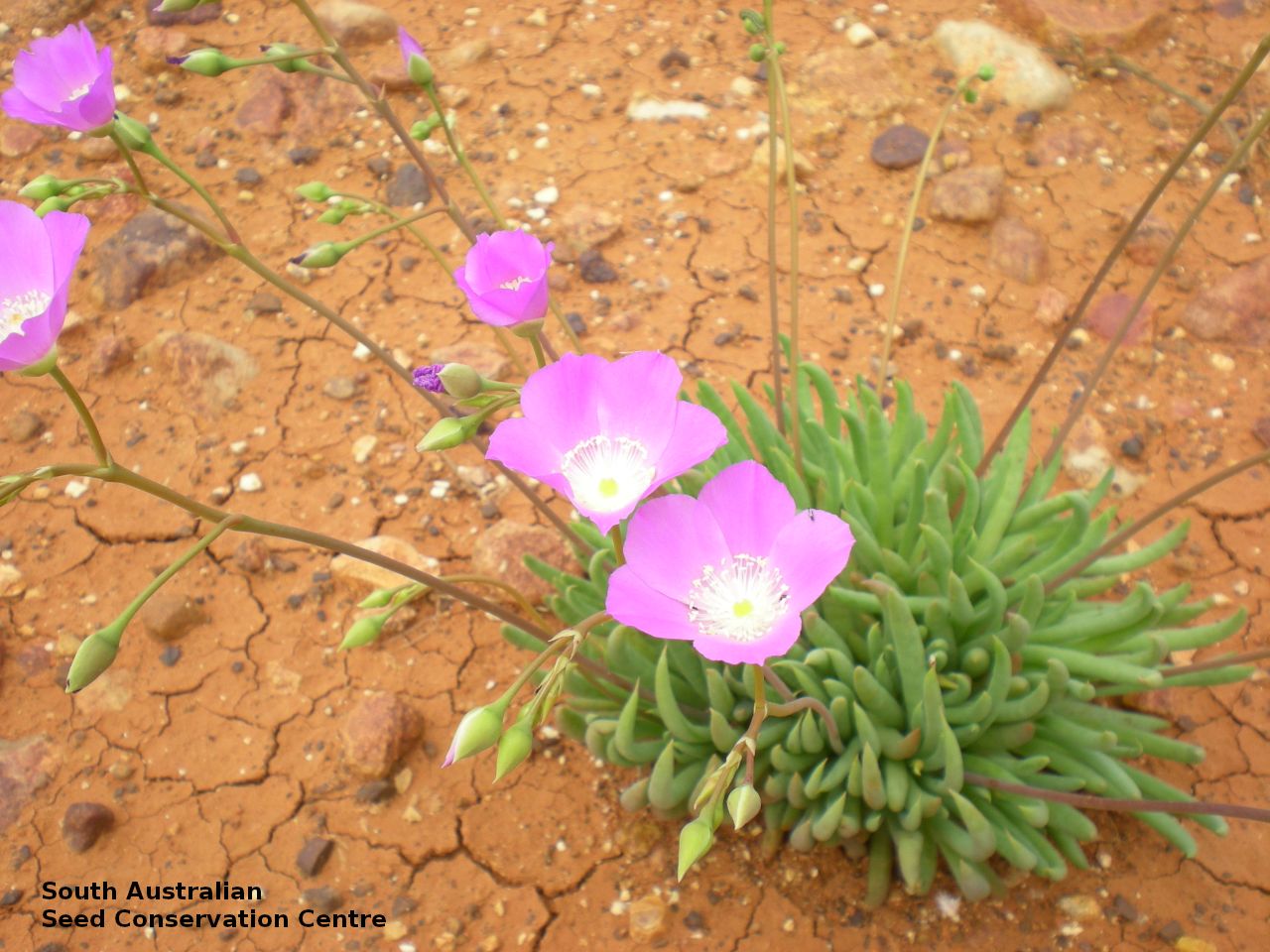
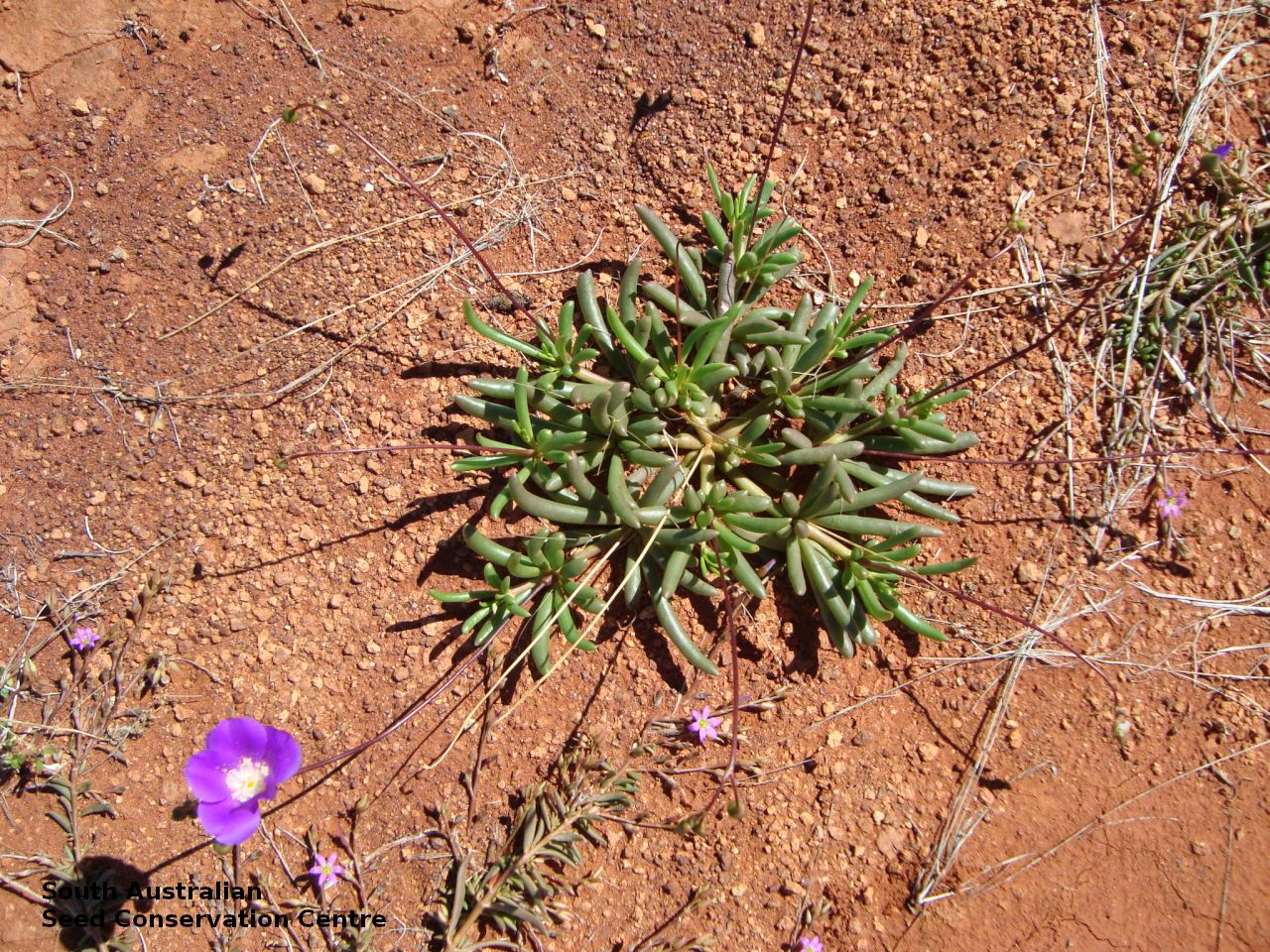
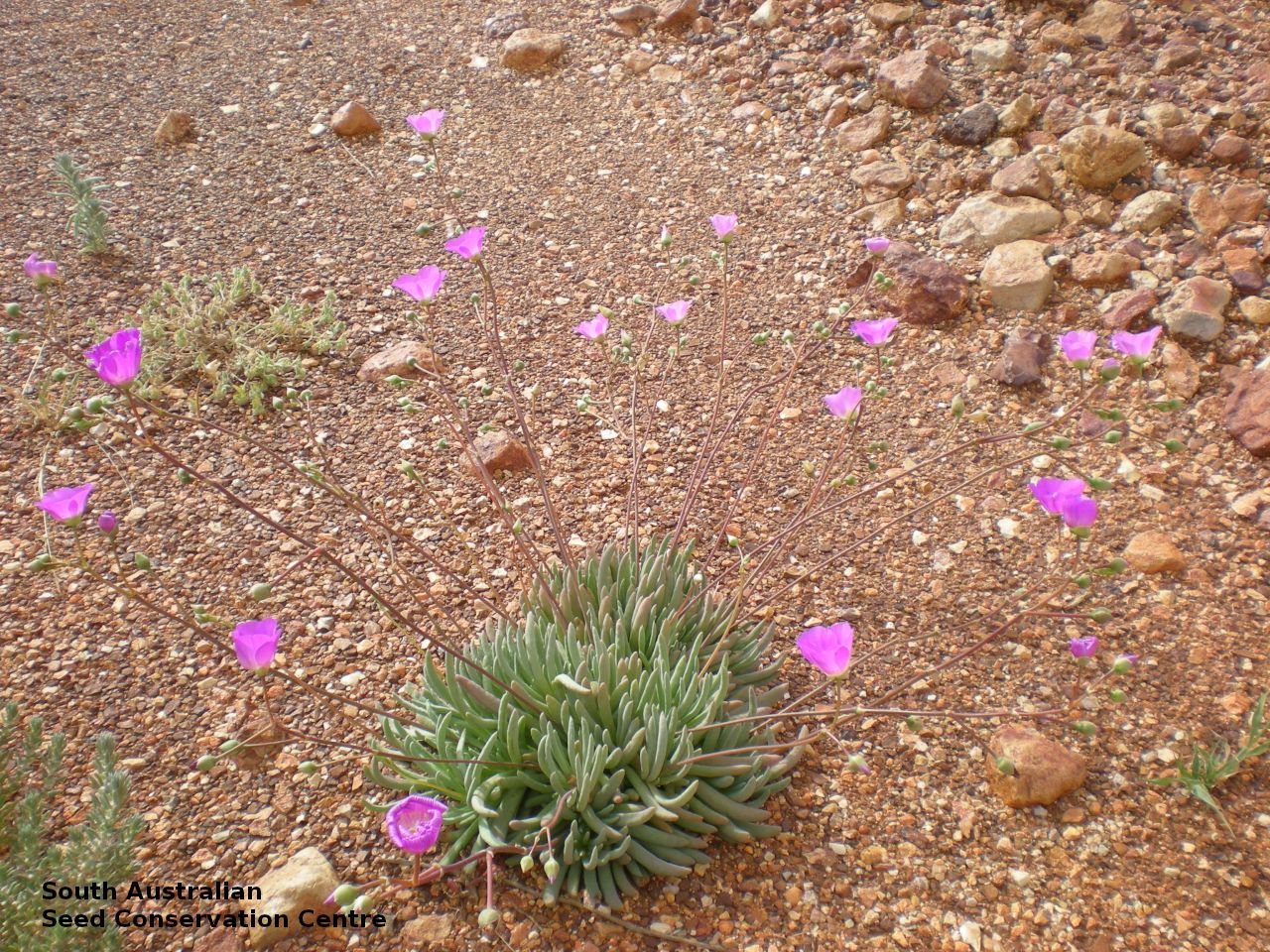
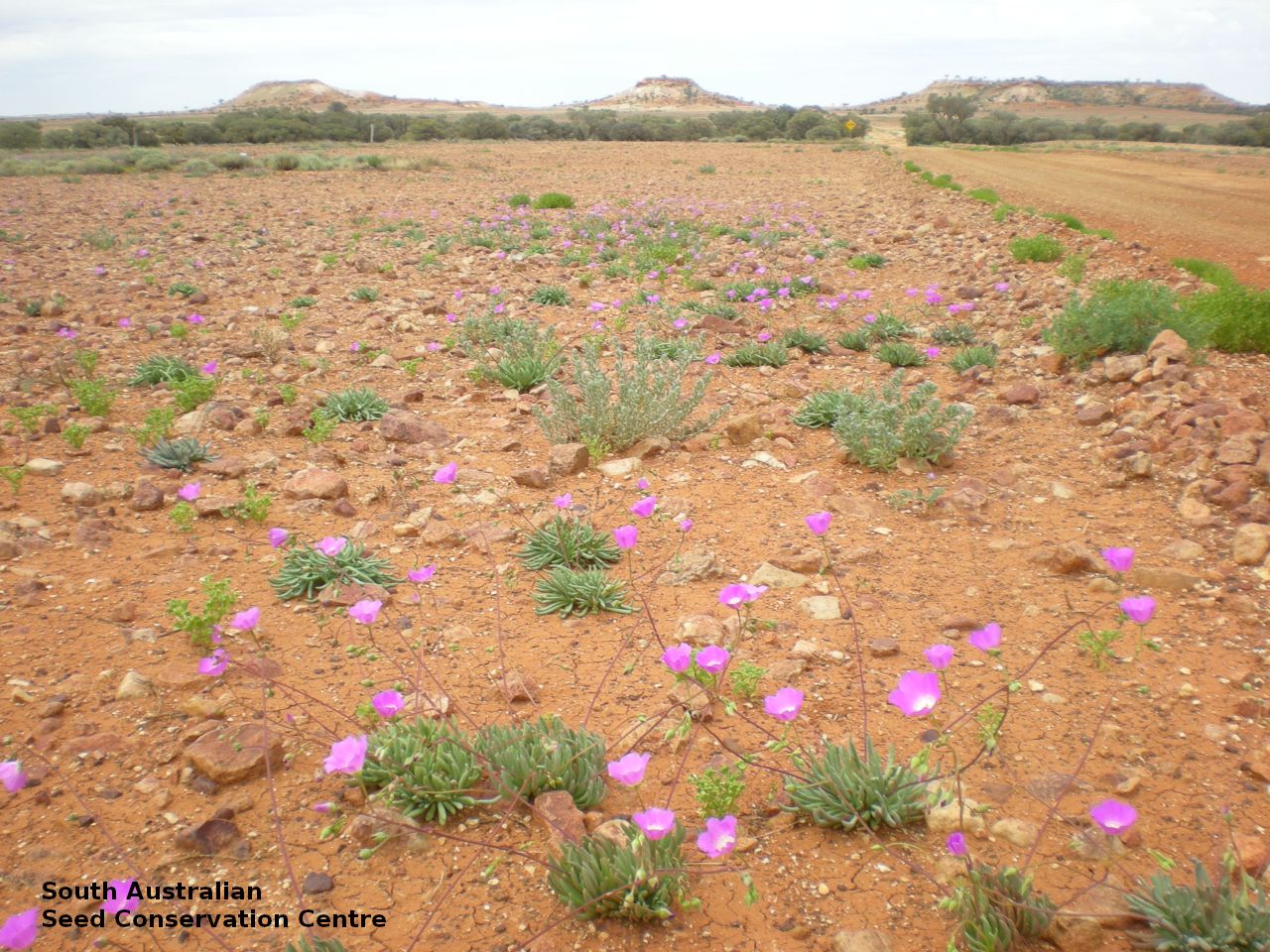
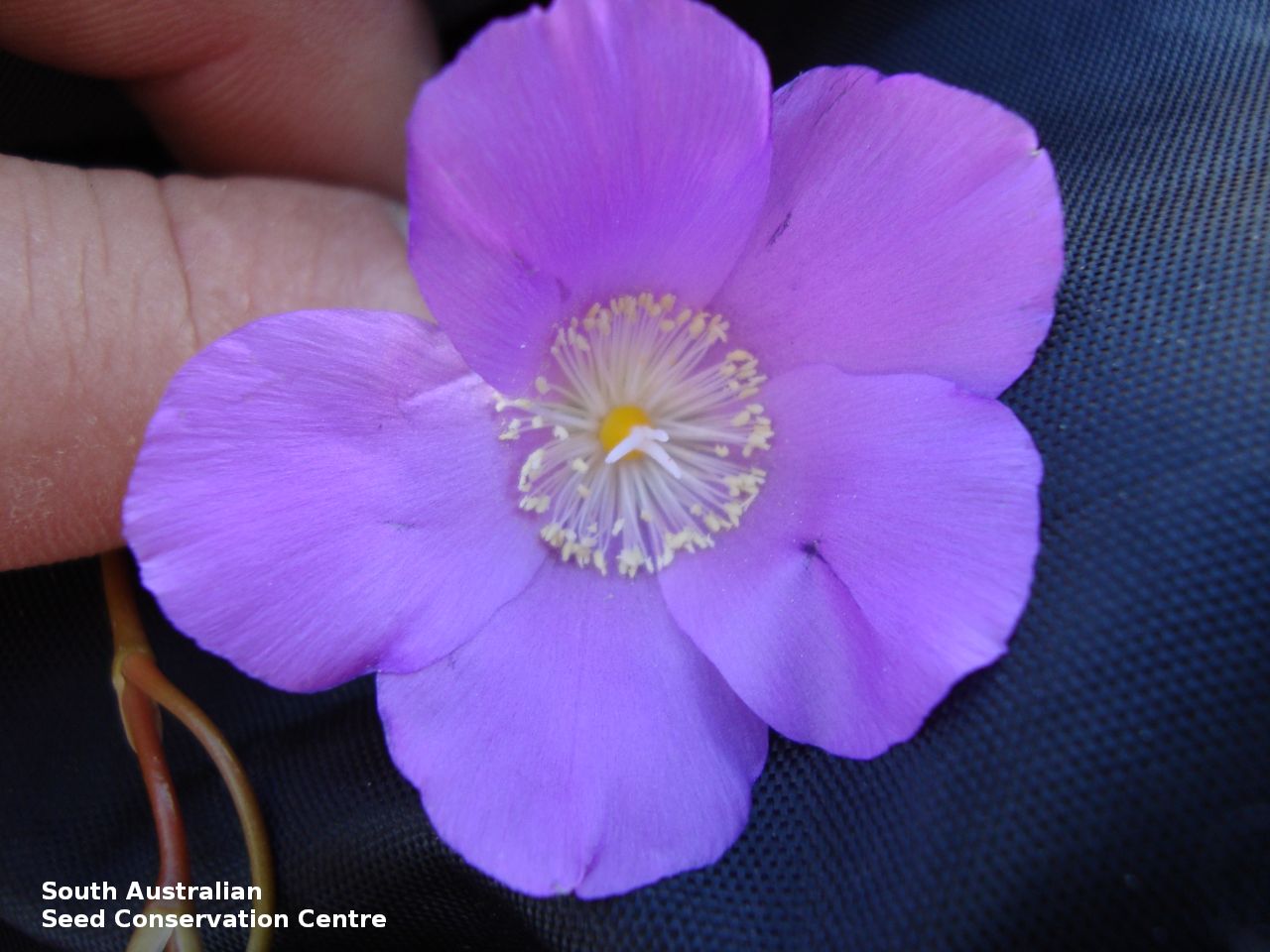
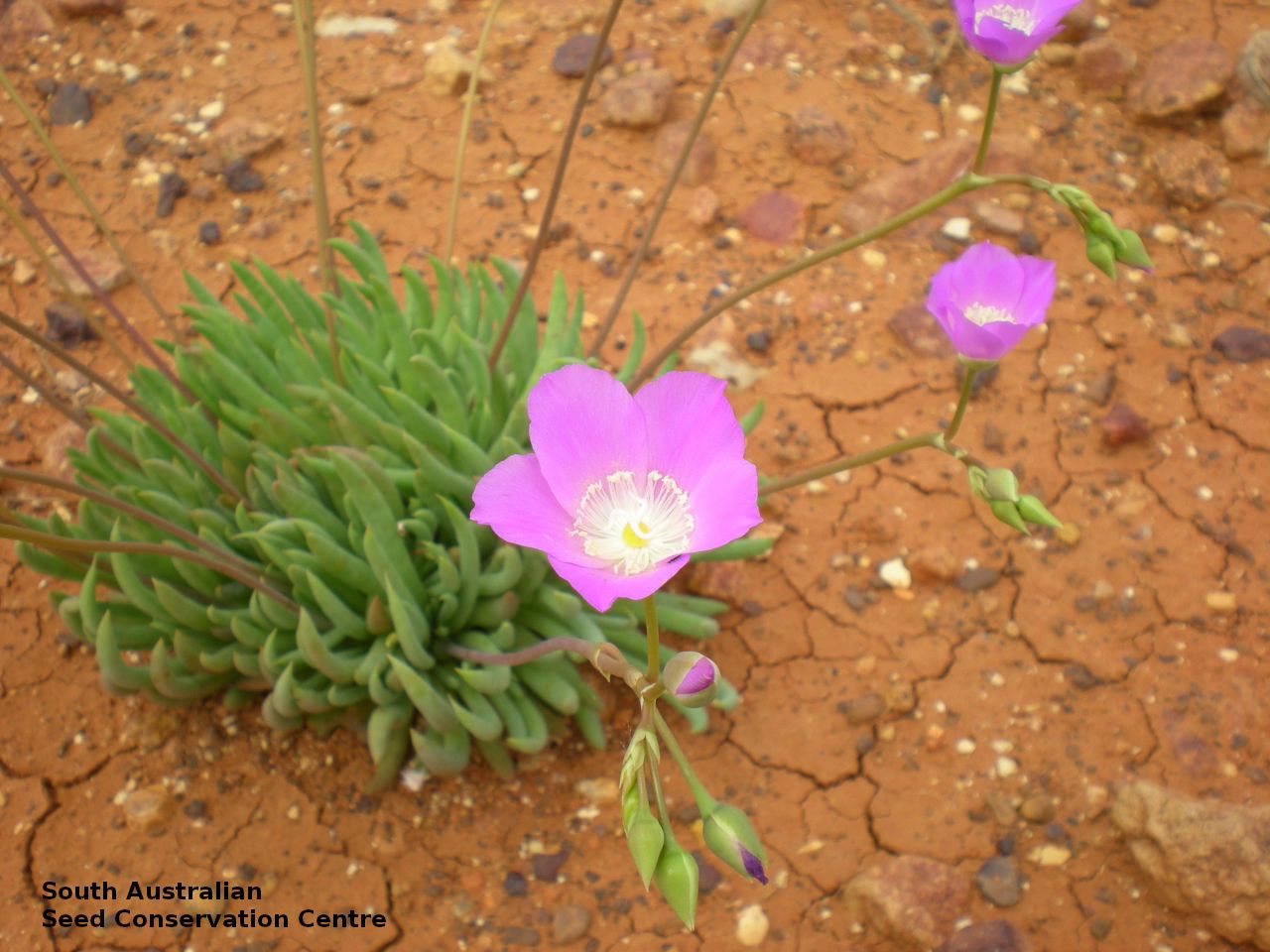

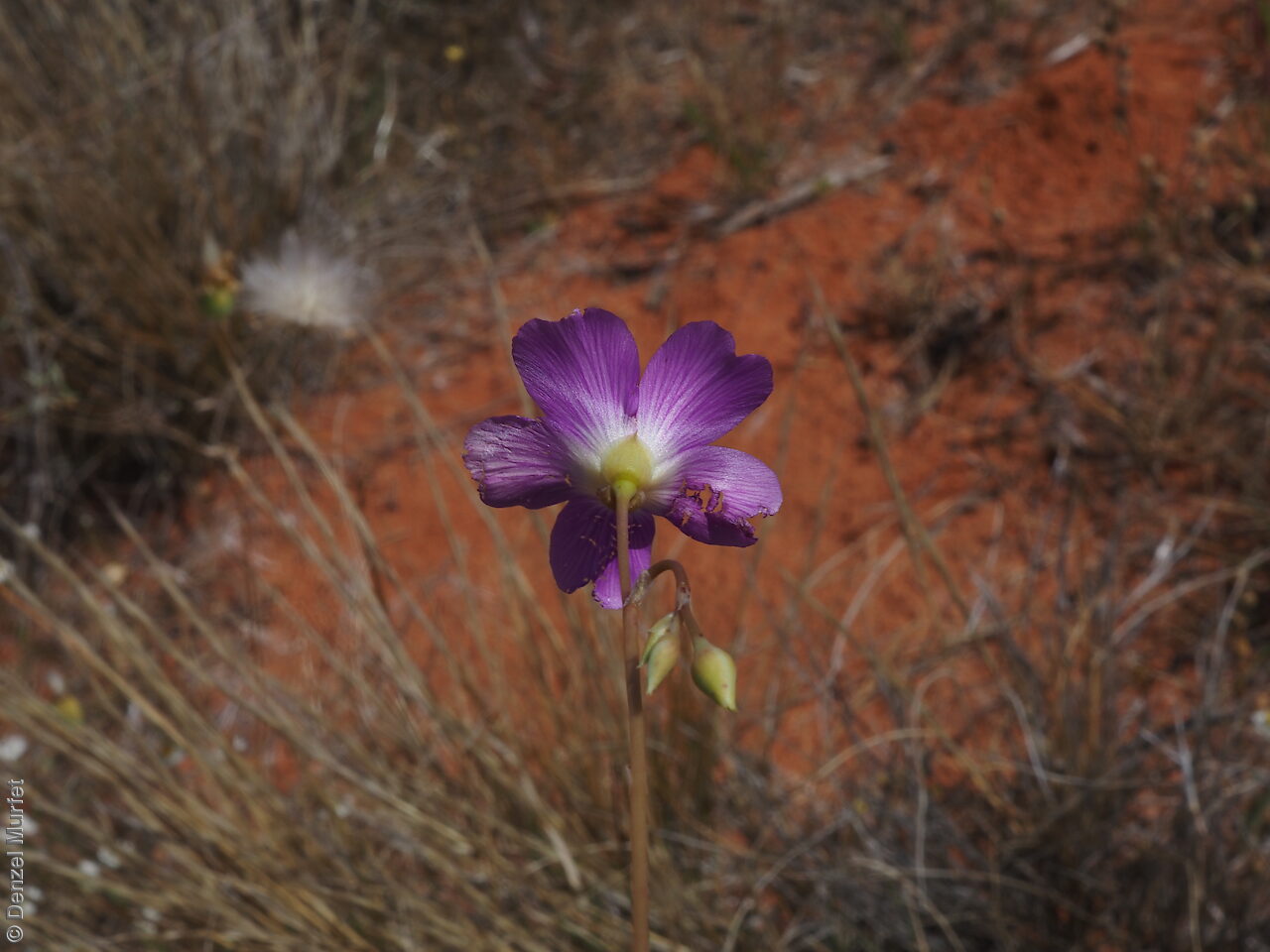
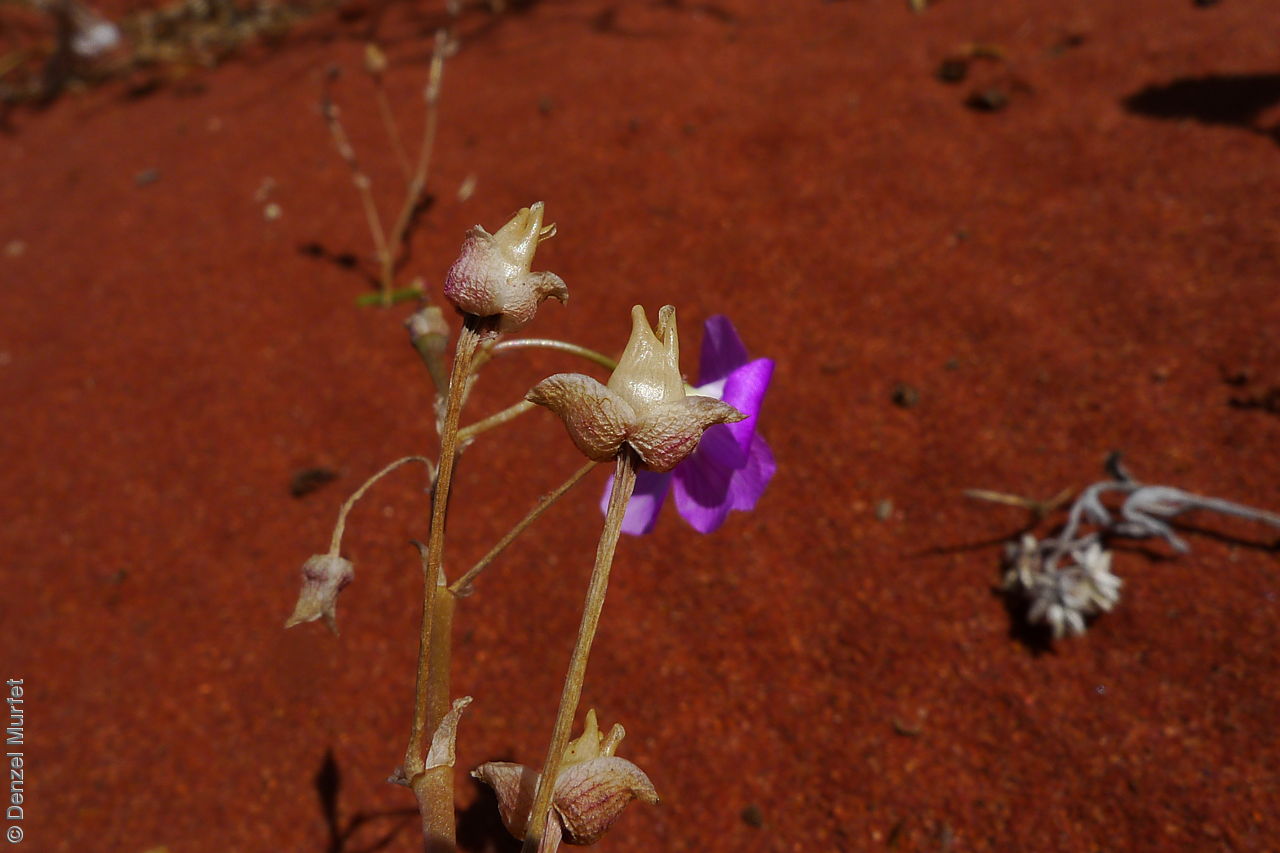
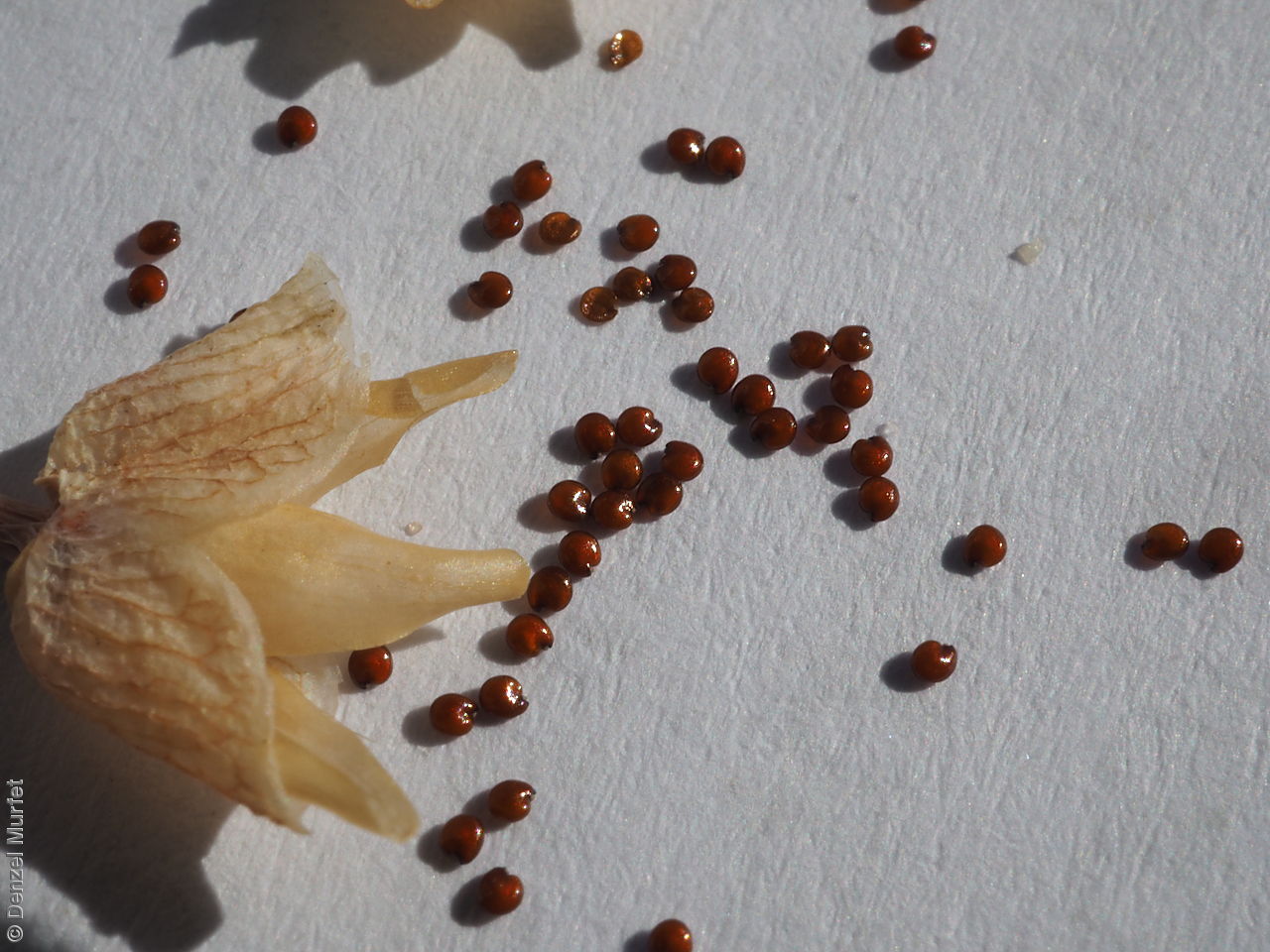
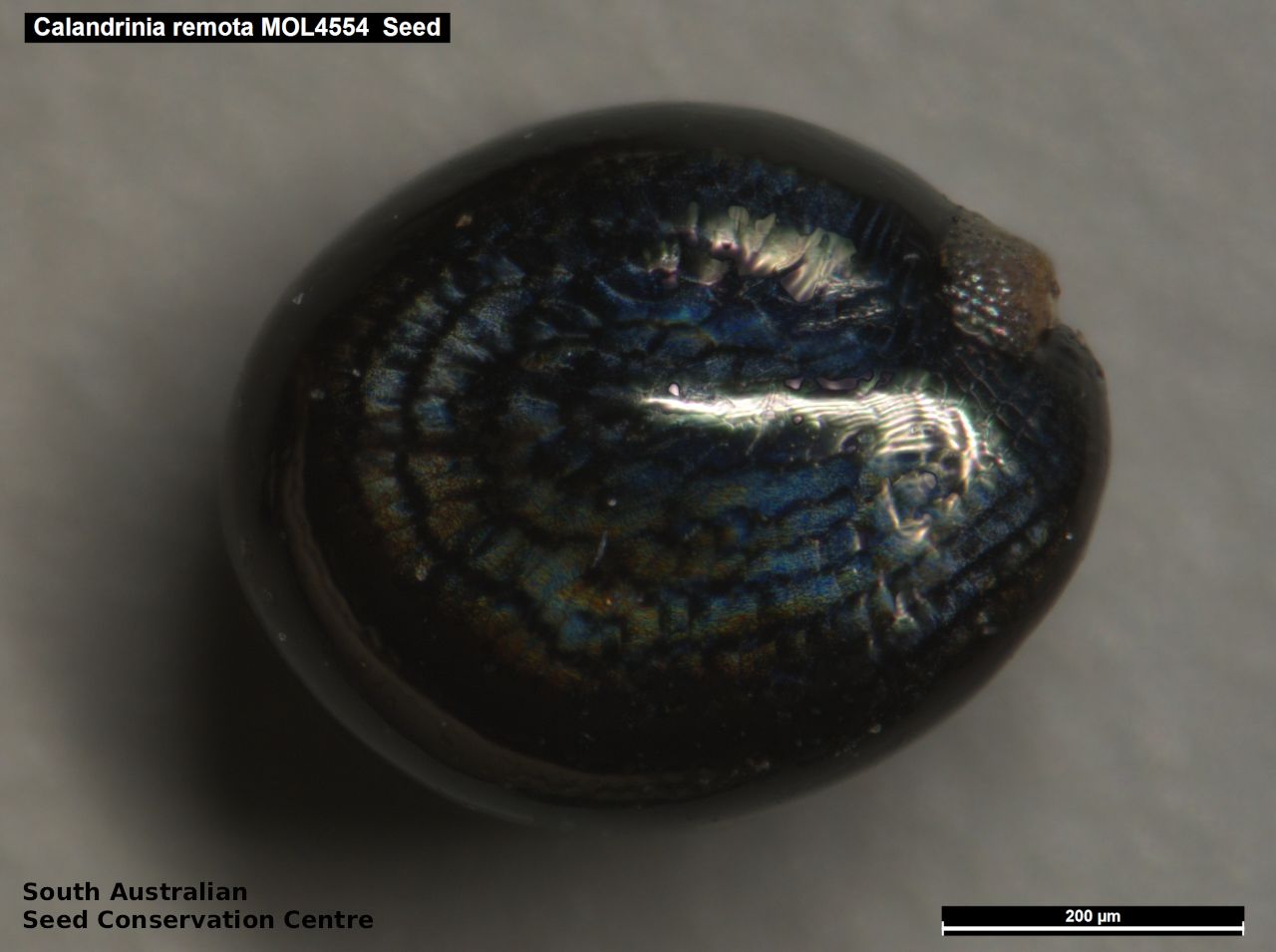
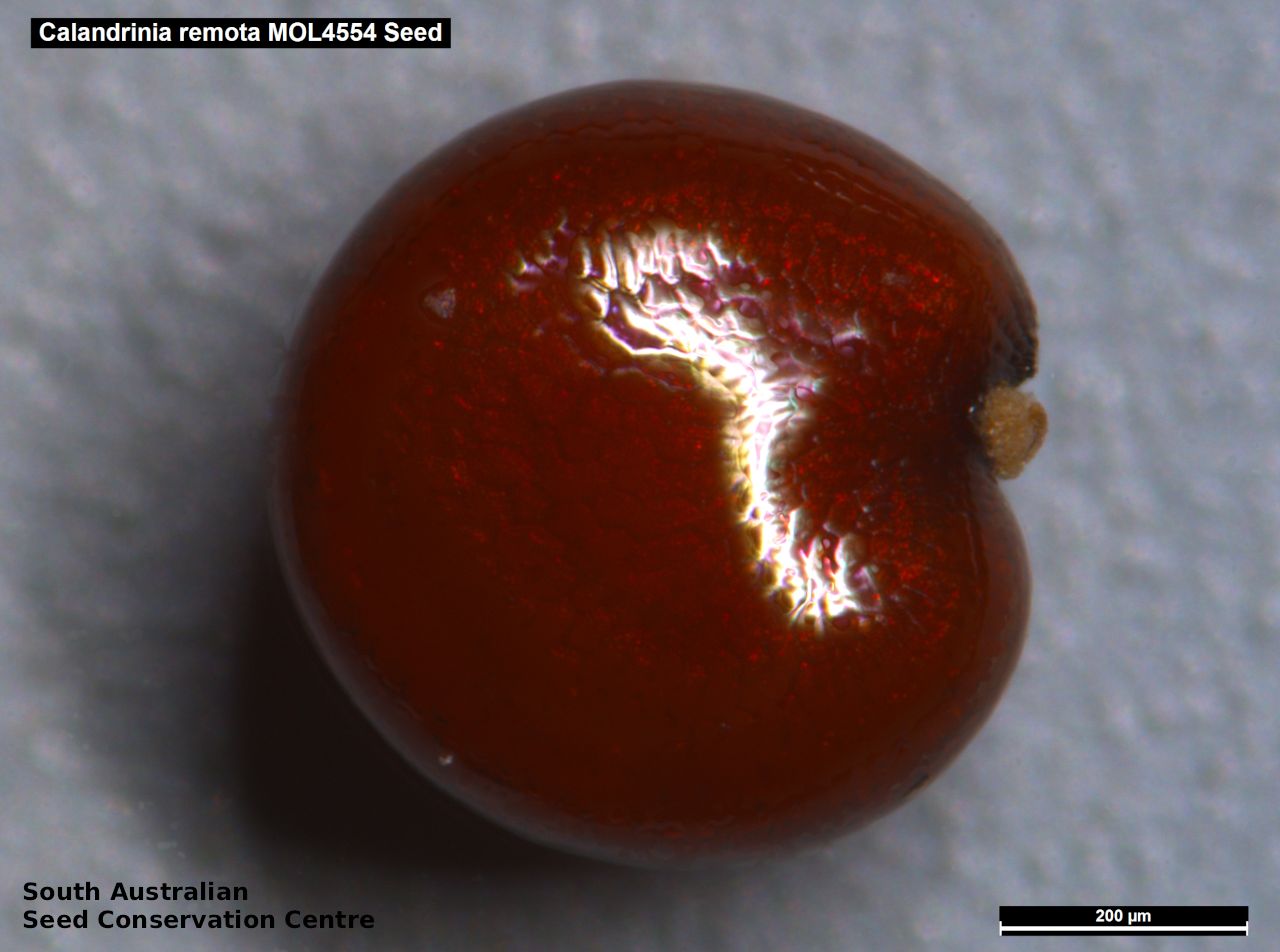
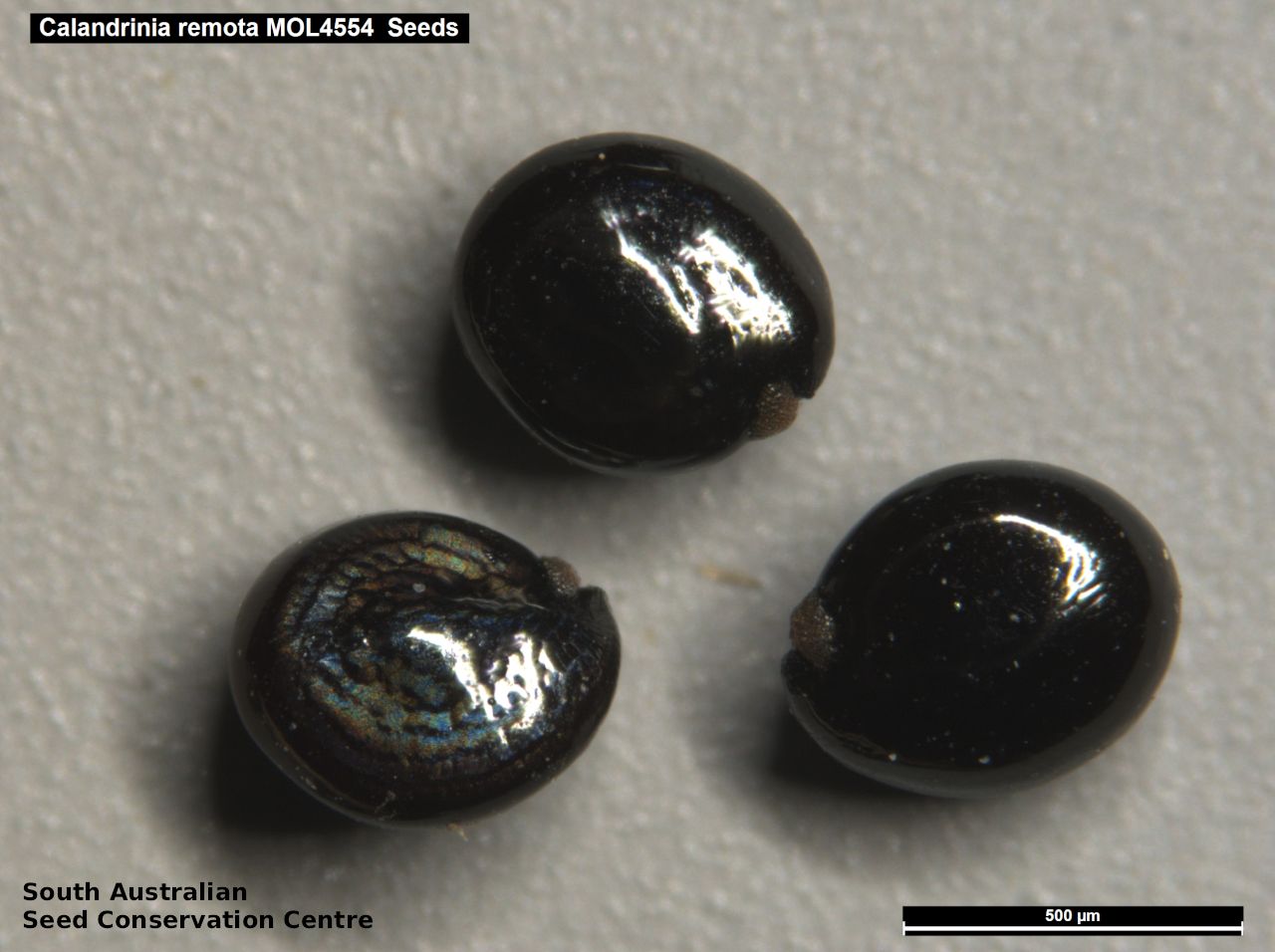
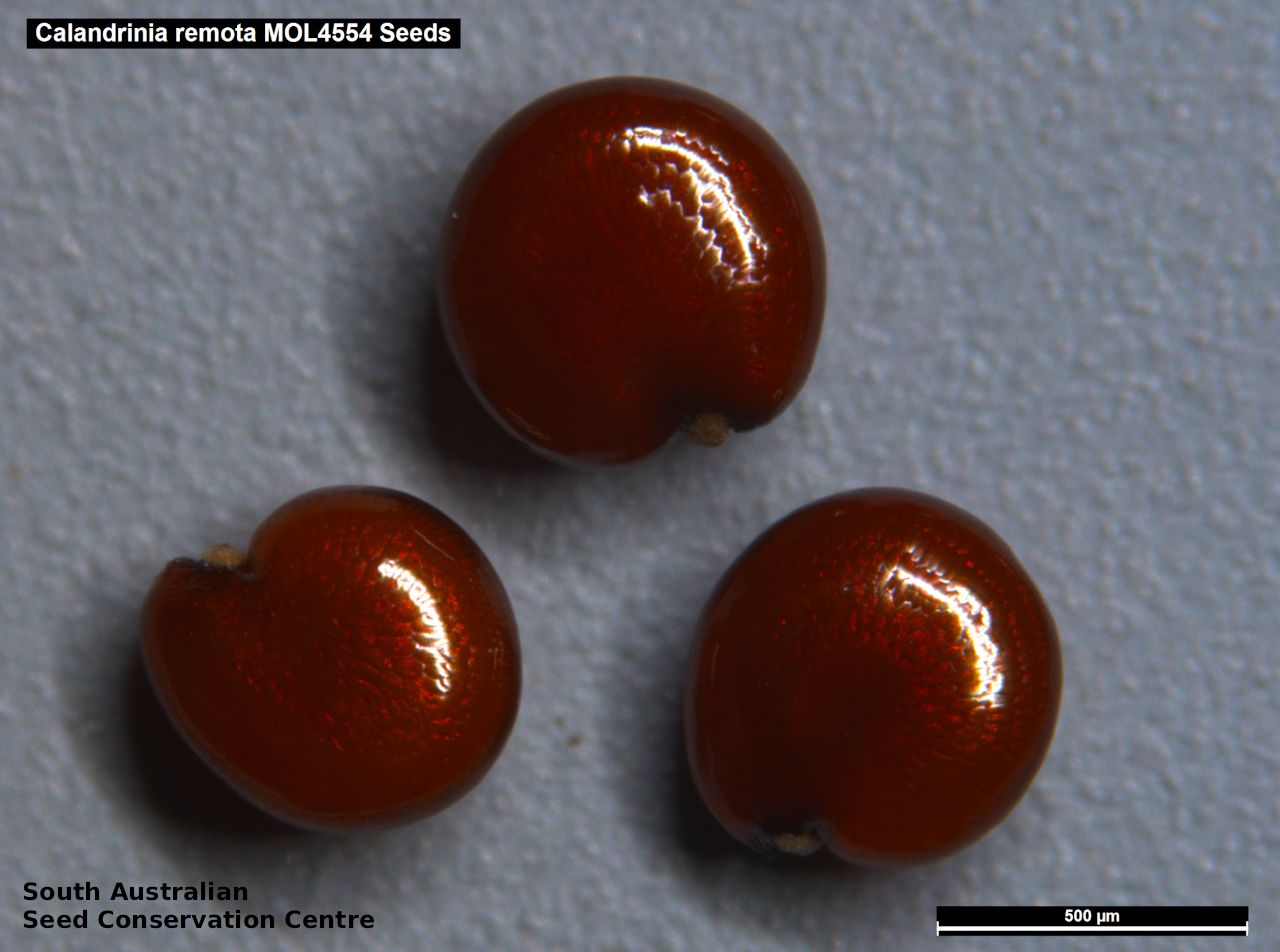
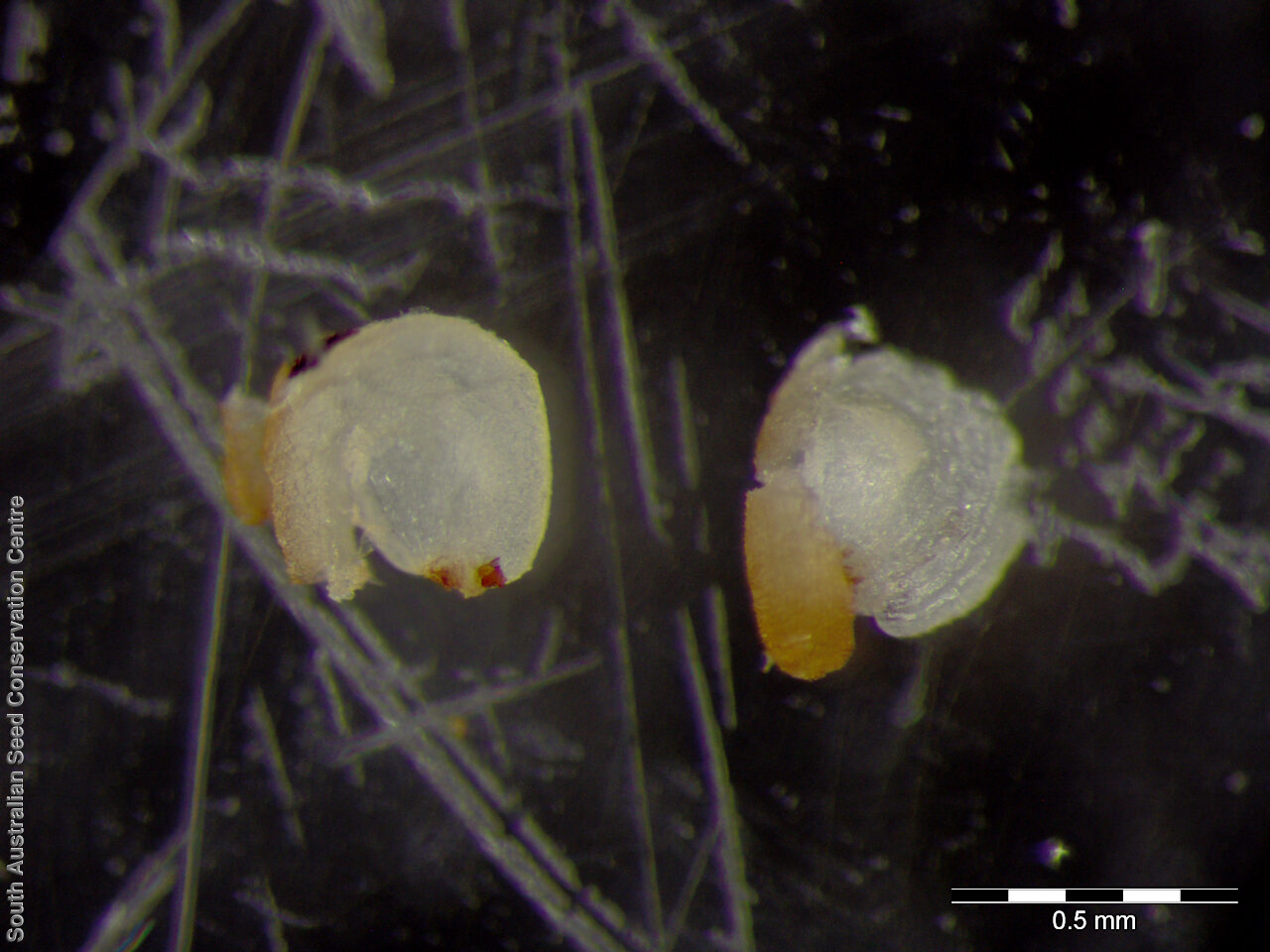
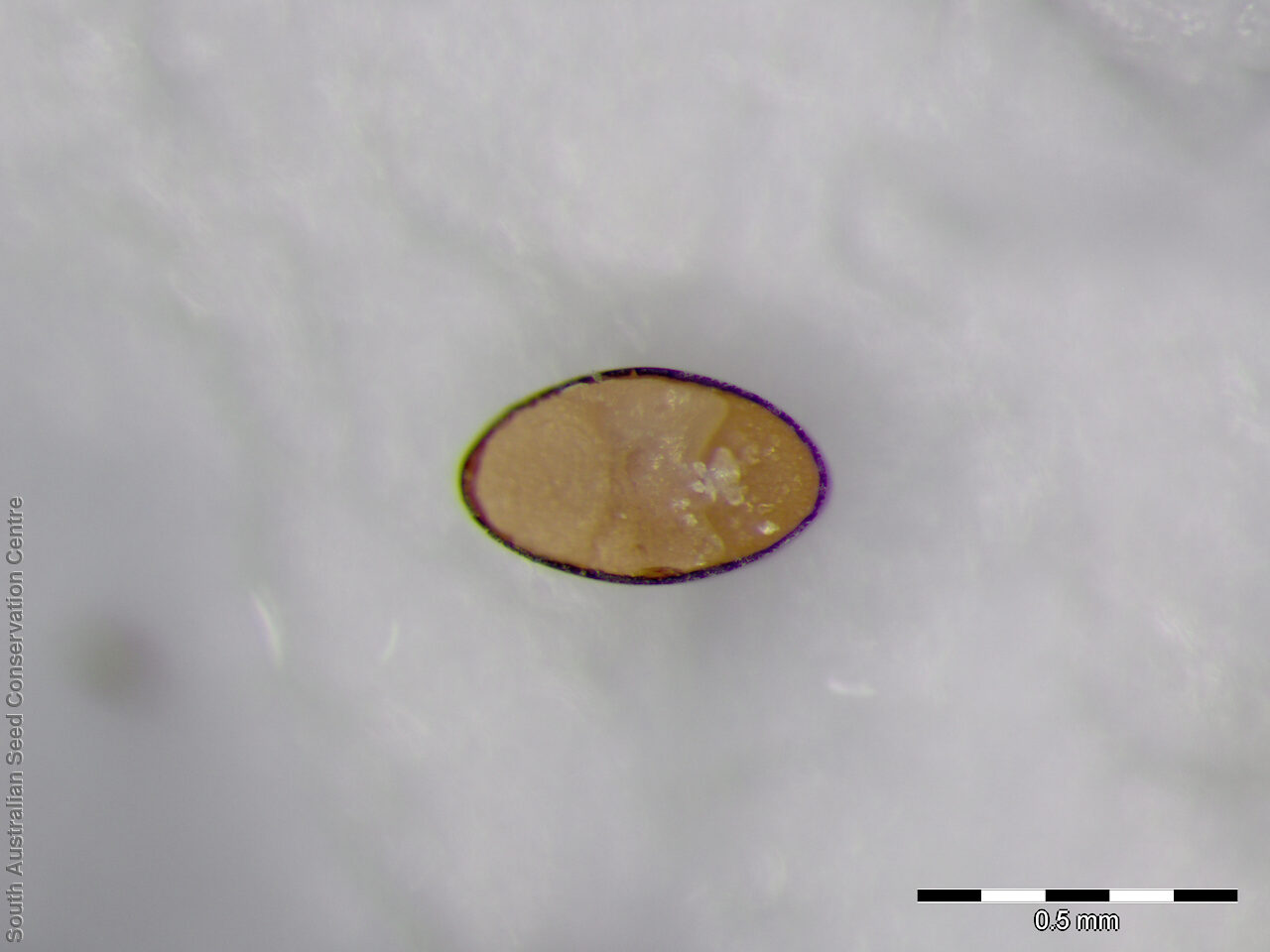

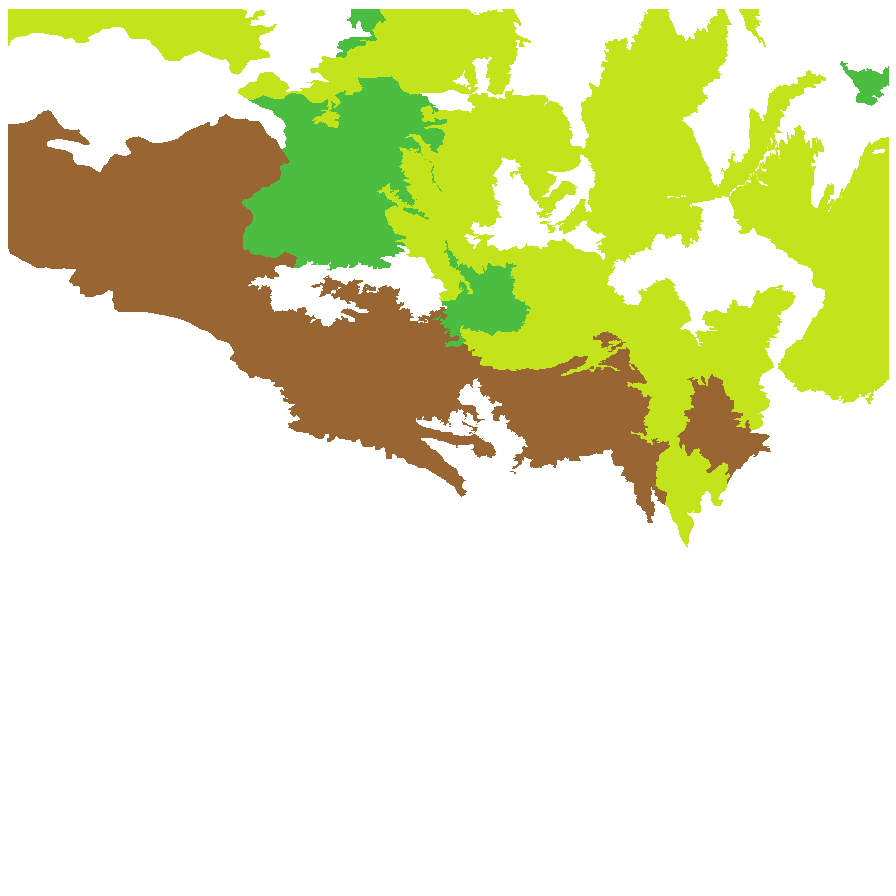
Botanical art
Prior names
Calandrinia polyandra var. leptophylla
Parakeelya remota
Etymology
Calandrinia named after Jean-Louis Calandrini (1703-1758), a Swiss scientist, professor of mathematics and philosophy. Remota from the Latin 'remotus' meaning remote, referring to the early specimen collected from the Gawler Ranges and the northern Flinders Ranges.
Distribution and status
Found in the central and northern parts of South Australia growing on red sand but also in sands associated with salt lakes. Also found in Western Australia, Northern Territory, Queensland and New South Wales. Native. Common in South Australia. Uncommon in New South Wales. Common in the other States.
Herbarium regions: North Western, Lake Eyre, Nullarbor, Gairdner-Torrens, Flinders Ranges
NRM regions: Alinytjara Wilurara, South Australian Arid Lands
AVH map: SA distribution map (external link)
Plant description
Annual herb with basal rosette of leaves and erect flowering stems to 30 cm long. Leaves basal and on lower parts of flower stems, sometimes clustered at the base of the inflorescence; sessile, linear-lanceolate to oblong to 11 cm long and 1 cm wide. Inflorescence on a long stalk with large dark-pink to purple flowers clustered at the top. Flowering between August and November. Fruits are pale brown ovoid capsule to 6 mm long with 3-valves, just exceeding the spreading sepals. Seeds are shiny red-brown reniform-ovoid seed to 1 mm long and 0.9 mm wide, with a smooth surface. Seed embryo type is peripheral.
Seed collection and propagation
Collect seeds between October and January. Collect mature capsules that are a brown colour and contain dark seeds. Place the capsules in a tray and leave to dry for one to two weeks. Then rub the capsules gently by hand to dislodge the seeds. Use a sieve to separate the unwanted material. Store the seeds with a desiccant such as dried silica beads or dry rice, in an air tight container in a cool and dry place. From two collections, the seed viability was low to high, ranging from 10% to 100%.
| Location | No. of seeds (weight grams) | Number of plants | Date collected | Collection number Collection location | Date stored | % Viability | Storage temperature |
|---|---|---|---|---|---|---|---|
| BGA MSB | 15,500 (1.01 g) 15,500 (1.01 g) | 100 | 22-Oct-2004 | MOL4554 Gairdner-Torrens | 28-Mar-2006 | 90% | -18°C |
| BGA MSB | 15,500 (0.46 g) 15,500 (0.46 g) | 100+ | 10-Nov-2005 | MKJ124 Gairdner-Torrens | 8-Aug-2006 | 10% | -18°C |
Number of plants: This is the number of plants from which the seeds were collected.
Collection location: The Herbarium of South Australia's region name.
% Viability: Percentage of filled healthy seeds determined by a cut test or x-ray.